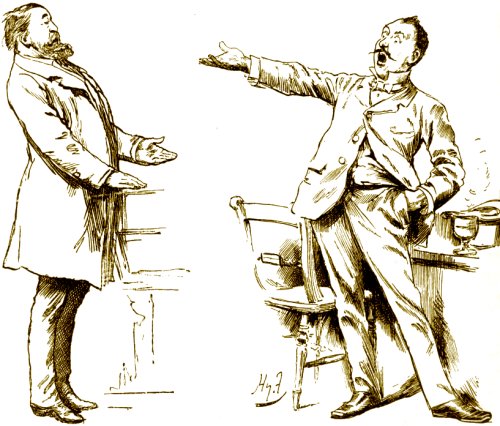Beginning with Conclusions
Today, we try not to begin with our conclusion. The University of Houston's College of Engineering presents this series about the machines that make our civilization run, and the people whose ingenuity created them.
We've read so much lately about attempts to turn Intelligent Design into science. I hadn't meant to put my oar in this water; but I realize that all this is much larger than a few people trying to build science upon religious belief. Everywhere we look, we see the same dismaying increase in attempts to build arguments upon foregone conclusions, which can never be disproved.
We see it in Internet blogs, religion, science, politics, the law ... The law might seem to be a perfect example: An attorney argues to convince a jury of a client's claim. On the face of it, the desired conclusion shapes the argument, yet good lawyers know to distance themselves from outcomes their clients want. An honest lawyer shapes an outcome that both fits the facts and serves the client. And that, by the way, is exactly what a good engineer does.
Engineering design may begin with some desired outcome. Yet the worst thing a designer can do is decide the shape and form of the design at the outset. Designs have to be shaped to constraints that take many forms. First, the inviolate physical laws of nature: Every year I hear from a dozen perpetual-motion-machine inventors who feel they're just thinking outside the box.
But, beyond nature's laws, designers also have to satisfy constraints of cost, safety, esthetics, and more. The most elusive constraint is the end user. Users inevitably tell designers how the design will really be used -- and that means retrofitting.
Politics is particularly treacherous since we find it so hard to separate consistency of conviction from consistency of position. But good politicians seek to create a social reality that's consistent with constraints -- an outcome that's not predetermined.
Scientists themselves are in danger of becoming conclusion-driven, since science so strongly depends on hypothesis testing. A scientist proposes that things be a certain way; then attacks the proposal. A good scientist fights to be proven wrong; a poor one just seeks out evidence to support the hypothesis. Still, scientists can't function without some loyalty to their hypotheses. It's a little like trying to play chess with ourselves. They need to fight as strongly for the hypothesis as against it.
So I look back on arguments I've gotten into and I come away with an upsetting realization: The ones I win leave me empty. What was the use of them? I gain only from the ones I lose. That's the fun of science, law, politics, and especially any kind of design. They're all about revising things we'd thought were settled.
Samuel Butler once wrote, "Life is the art of drawing sufficient conclusions from insufficient premises." Good designers like that word sufficient. We design conclusions that fit the facts. Then we revise. And revise. As Henry Adams put it, "Only on the edge of the grave, can man
conclude anything."
I'm John Lienhard, at the University of Houston, where we're interested in the way inventive minds work.
As a matter of interest, the full text of Judge John E. Jones III's opinion in the matter of Tammy Kitzmiller, et. al., vs. The Dover School Board, Dec. 20, 2005 follows. Jones sets forth these issues with remarkable cogency, as they relate to the scientific status of Intelligent Design in this web site.
